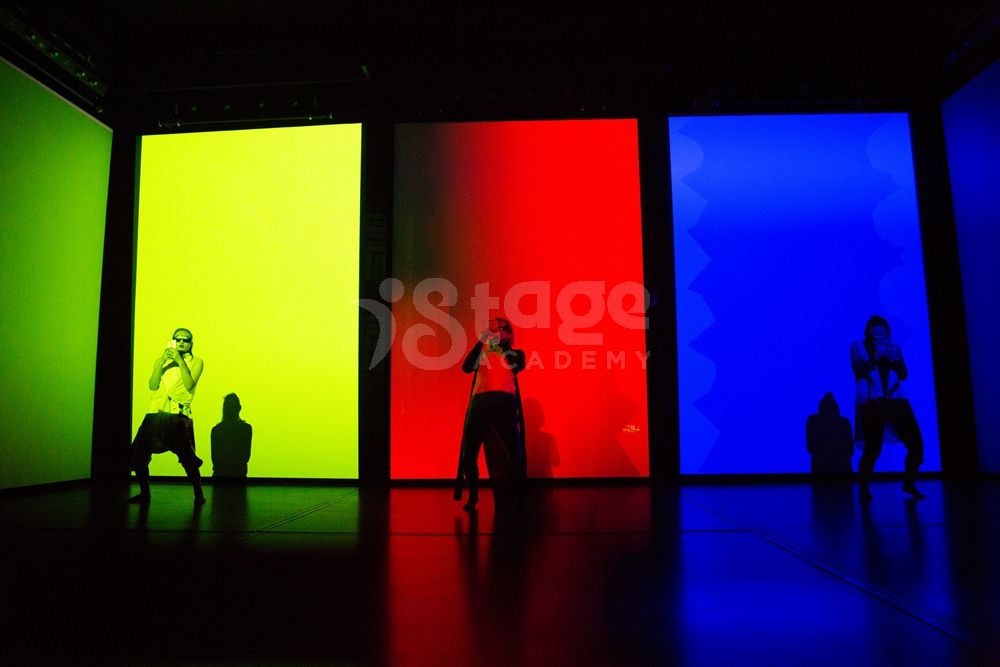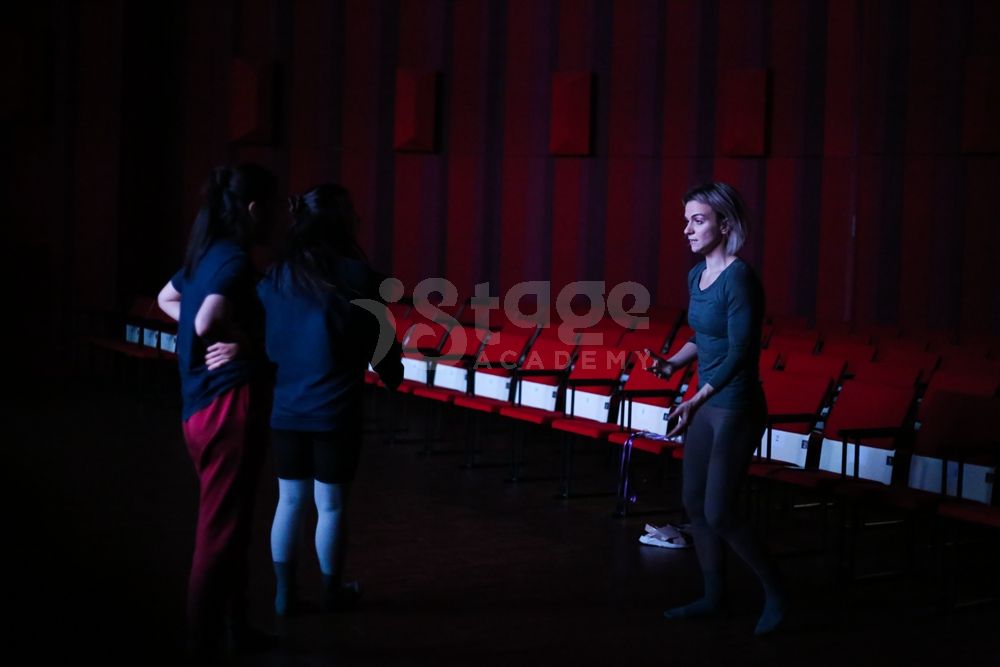November 21st, 2018

On November 9th, at the Cement Park Live Art Festival where many artists from various areas gathering together to perform, we saw Tomoko and Risako. The girls were attending the festival as "professional dancers" for the very first time together with their dance teacher Julie S. This has been their third performance in public within a month, it was also the first performance of the "A MAGIC OF MAYBE" in the SCROLL series.
They appeared in the last performance of the day. This 30 minutes performance involves 5 parts, artistically showed the shocking reality that people are so addicted to social media and digital devices while losing the connection with real world that we are in. They embedded their true feelings towards the online world in this piece of art, and hope to awake people to reconnect with our real life, the family, the friends, the surroundings and the nature.
When did you start learning dance?
"We started learning ballet when we were 4 years old. When were six years old we learned lyrical which is similar to contemporary dance. We danced 5 days a week and would usually head to the studio when we got out of school. This went on for about 10 years. Dance became a big part of our lives.
"I also learnt piano and gymnastics for 3 years,” said Tomoko.
"I also learned how to play piano and the ukulele on top of gymnastics," Risako said.
The sisters said they did not continue their side hobbies because they became more and more infatuated with dancing and did not have enough time to pursue both.
"Shanghai took some getting used to and we had to focus more on our studies. This halted our dance education for about two years until we came to iStage. "
How did you feel your first time iStage?
"The dance class is definitely different. It’s a good different. We haven’t tried the same type of dance class before. Carefree, has a lot of freedom with your movements, and I really like how Julie encouraged us. We had little opportunities to perform before in America, but now we do a lot of choreography, performances and solo parts. We work with each other and create the choreography for each dance and performance. I really enjoy that. "
Are there any changes recently?
"We feel a lot of changes. And also Julie has mentioned a lot of new things. We kinda developed from before. Our bodies were so used to ballet movements, really strict. But now they are more free."
"In America, we were rarely in the same dance class. Now we are always together and have found a natural and comfortable environment to dance in and new ways to express ourselves and communicate."
"Since I arrived Shanghai and started learning the new dance style, I kinda of got the idea of using dance choreography to address social issues. For example, the performance we did before, about the phone addiction. I was really invested of that. I like to using the dance choreography to convey the message."
"We have been dancing for so many years, it just became part of our lives and a habit. Dance is really meditating. Sometimes it gets overwhelming. But it's still nice to have two and half hours or three hours to dance, it is really nice. Relaxing and tired at the same time."
Support from parents
"Our parents give us a lot of love! Dancing or not dancing, they usually let us make our own choices. If we have a show, the whole family will go to the scene to support. But usually, when there’s a conflict between dancing and learning, they always let us solve it ourselves. They always wish us good luck and tell us just to have fun."
About this 30-minute performance
"This 30-minute dance gets viewers to reflect on their self-function, self-restraint, self-worth, and self-awareness. We must be immersed in every little movement. Many small movements convey the ideas and ideas of dance. Different people will have different thoughts when they see this dance."
About the future
We asked them if they would want to become professional dancers. Their answer was as follows: "Dancing will just stay as a hobby for us but not career. Mentally and physically it’s a challenge for us to be professional dancers."
Risako has expectations for the future. "I am looking forward to going to high school and looking forward to a new life. Although it will be very hard, I will continue to dance."
Speaking of the future, Tomoko's eyes are fixated on her upcoming life. "I don’t know where my future will be. I will probably not choose any dance-related majors. I want to try other options, but that doesn't mean I will give up dancing. It has been a huge part of my life and I see it as another language to communicate with in this world."

In order to better understand the sisters, we conducted a brief interview with their teacher Julie S.
First impression
"In the beginning, I could feel that the dance training they had received before was very traditional. They knew how to do some beautiful movements, but there was no connection between the movements, and there was little life in the dancing itself. They are very athletic and have an abundance of core power which they know how to use."
The first lesson
"The first lesson demonstrates what choreography is. When they tried to do it, they were unable adjust their breathing very much at first. There are so many dancers who have this kind of phenomenon when they first come into contact with contemporary dance, but if you can't control your breathing, it will be very exhausting. In the first class, they were very keen to try their best to do every detailed move. I found out the things that we should work on throughout the coming year, such as a proper breath, a soft transition between movements, an articulation in toes and fingers, spiral connections in the body."
Process of improvement
"In my class when you improvise, you are not only aware of your body and not only listen to your feelings but you have an empathy for other dancers and the whole environment in general. They tried a few methods in the first three months and heavily repeated in order to solidify their knowledge of the moves. After three months, they began to change, and started to look for the meaning of choreography. The sisters began improvising and making their bodies sensual and free."
Do you have to learn ballet first about contemporary dance?
"Traditional ballet and contemporary dance are two completely different dance methodologies. For example, the traditional ballet breath is in the chest and your stomach movements are limited because of tight fashion of the costume. The breath in contemporary dance starts in the center of the body, under the belly button, where you're natural breath starts as well. There is a different attitude to gravity force in ballet and contemporary dance. But if you want to be a professional dancer, it is better for you to learn them both. So you will have more advantages to choose which company you would like to dance in."
